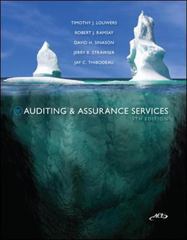Exhibit 9.4
As a relationship officer for a money-center commercial bank, one of your corporate accounts has just approached you about a one-year loan for $3,000,000. The customer would pay a quarterly interest expense based on the prevailing level of LIBOR at the beginning of each quarter. As is the bank's convention on all such loans, the amount of the interest payment would then be paid at the end of the quarterly cycle when the new rate for the next cycle is determined. You observe the following LIBOR yield curve in the cash market:
| 90-day LIBOR | 4.70% |
| 180-day LIBOR | 4.85% |
| 270-day LIBOR | 5.10% |
| 360-day LIBOR | 5.40% |
Refer to Exhibit 9.4. If the bank wanted to hedge its exposure to falling LIBOR on this loan commitment, describe the sequence of transactions in the futures markets it could undertake.
| | a. buy three Eurodollar futures contracts that expire at the end of the year. | | |
| | b. buy three Eurodollar futures contracts that expire at the end of the first quarter, three that expire at the end of the second quarter, and three that expire at the end of the third quarter. | | |
| | c. sell one Eurodollar futures contract that expires at the end of the first quarter, one that expires at the end of the second quarter, and one that expires at the end of the third quarter. | | |
| | d. sell three Eurodollar futures contracts that expire at the end of the year. | | |
| | e. buy three Eurodollar futures contracts that expire at the end of the first quarter. | | |






